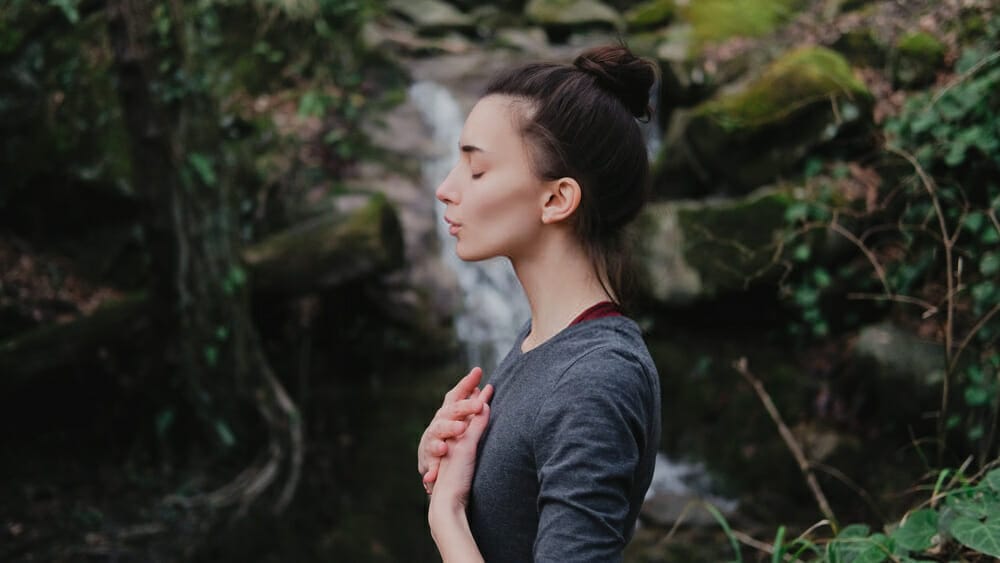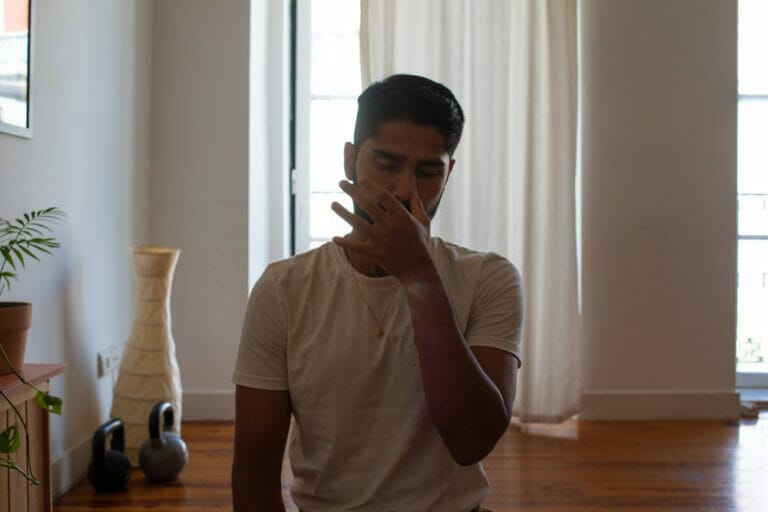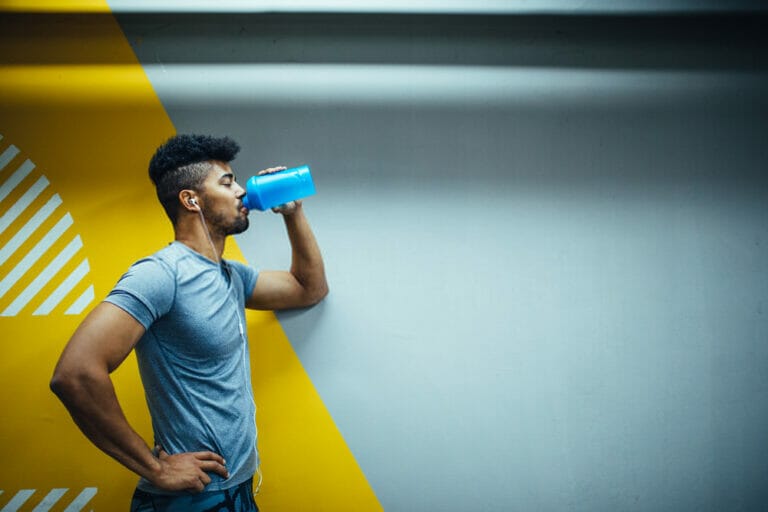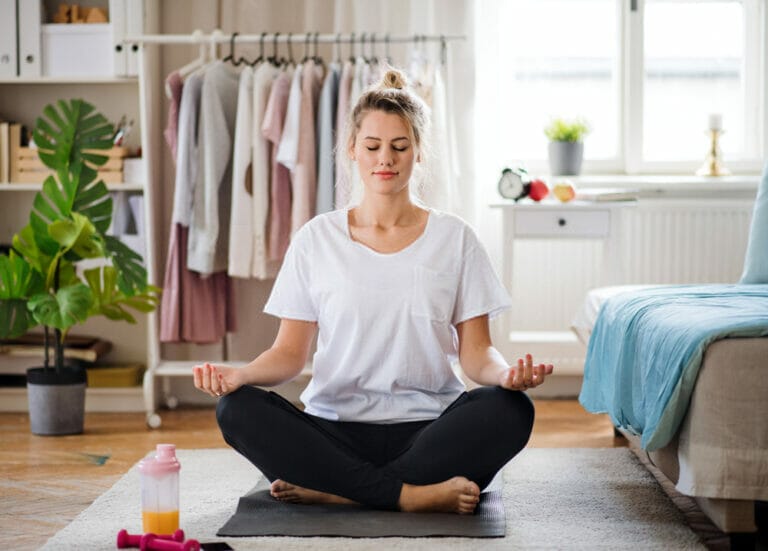Pranayama – Its Meaning, History And Other Details
Pranayama (प्राणायाम) is a Sanskrit word which means “extension of the life force,” and denotes both breathing exercises and yoga practices that you can use to lengthen or deepen the breath.
The practice of pranayama exercises is one of the easiest ways to slow down and redirect your natural breathing pattern. It leads to increased focus, relaxation, and peace.
In this article, we will discuss the physical and psychological benefits of learning how to breathe correctly. You will find basic techniques for Pranayama, as well as types and sequences of pranayama exercises.
We will also discuss the history of Pranayama and the different types of Pranayama that are performed independently.
Let's begin by first knowing what Pranayama is.
What is Prayanama?
Pranayama is the fourth of the eight limbs of Raja Yoga. A yoga aspirant can only begin breath control exercises after achieving Asana Siddhi (Mastery in Yoga Posture).

Pranayama is derived from two Sanskrit words: Prana and Yama. Prana can be translated as "breath." It is, in that sense, breathing exercises or breathing techniques. In other words, it is under prana's authority.
Yama is a Japanese word that means to control or regulate. Prana has a broader definition. Pranayama, in a nutshell, is a collection of breath control exercises that limit respiration.
It is essential in yoga and other spiritual activities such as Japa, Meditation, and Prayer. It is a component of yoga practise that consists of particular breath control techniques.
What Is Prana?
Prana is the universal life force or energy that distinguishes the living from the dead, according to the ancient Indian school of yoga.
This life force energy, or chi, runs through thousands of delicate energy channels known as 'nadis' and energy centres known as 'chakras.'
Prana is the life-giving force required by our physical and subtle layers, without which our bodies would perish. It is the only thing that keeps us alive.
Prana has various meanings, ranging from physical breath to awareness energy to kundalini shakti to the primordial creative power. According to yogis, the entire cosmos is a manifestation of prana.
In the body, there are five fundamental types of prana. The pancha vayus – prana vayu, samana vayu, udana vayu, apana vayu, and vyana vayu — control several parts of the human system.
You can control the Pancha Vayu with yogic practices such as the Shakti Chalana Kriya. You will be free of most illnesses, especially psychological ones, if you master this five vayus.
What are the sources of prana?
There are numerous ways to derive, grow, maintain, and retain your prana level, broadly grouped into four key categories: food, rest, breath, and being in a calm, joyful state of mind.
Fresh foods contain more prana than canned, frozen, or stale meals. Similarly, vegetarian cuisine is supposed to have vital prana, but meat, because it is dead, has low or even negative prana.
However, the most direct and immediate source of prana is breath; when our breath ceases, we die. And how we breathe has a significant impact on how we feel.
Effects of high and low prana
It was discovered that the quantity and quality of prana and how it flows through the nadis (subtle energy pathways) influence one’s mental state.
The average person's energy channels may be partially obstructed due to a lack of attention, causing the flow of prana to be broken and jerky.
Worry, dread, uncertainty, conflict, stress, despair, doubts, and other negative feelings increase as a result.
The mind feels calm, cheerful, optimistic, and enthusiastic when the prana level is high, and its flow is continuous, smooth, and steady.
History of Pranayama
Let’s look back in history to the time when the human race first used prana.
Brihadaranyaka Upanishad
While the term prana is mentioned in the Chandogya Upanishad as early as 3,000 BCE, references to Pranayama as a breathing technique do not appear until much later in yogic literature (approximately 700 BCE).
The Brihadaranyaka Upanishad's hymn 1.5.23 has the oldest recorded references to Pranayama as a breath-related discipline.
The Bhagavad Gita
In the Bhagavad Gita, Chapter 4, verse 29, there are references to pranayama techniques. The text emphasizes the use of mindful inhaling, exhaling, and breath-holding to induce trance-like states.
The literature also claims that frequent pranayama practice will help you gain more control over your senses by "curtailing the eating process."b
The Maitrayaniya Upanishad
Because it contains one of the oldest references to Pranayama as a component of a more comprehensive, complex system, the Maitrayaniya Upanishad is an essential text in the history of Pranayama.
This treatise, most likely written centuries before Patanjali's Yoga Sutras, lists yoga as a six-step procedure that includes breath control, sensory withdrawal, concentration, meditation, reasoning, and union.
Patanjali’s Yoga Sutras
Yoga as a system evolved and grew by the time of Patanjali. The Maitrayaniya Upanishad’s six-limbed method had evolved into an eight-limbed approach. Pranayama is mentioned in verses 2.29–2.53 of the Sutras.
While Patanjali does not go into great length about the nature of prana in these parts, he does cover the inhale, exhale, and retention of breath.
In addition, Patanjali mentions the fourth Pranayama in sutra 2.51 that he argues is superior to or superior to the other three.
The Hatha Yoga Pradipika
The Hatha Yoga Pradipika, written by Goraksha Nath’s pupil Swami Svatmarama, is one of the most important medieval scriptures.
The Pradipika varies from other of the earliest writings on Pranayama as it provides more detailed directions for practice.
- Specific references to alternate nostril-breathing patterns,
- explanations on how to retain the breath,
- suggestions on the best times to practice, and
- an overview of the many signals of development in Pranayama is included in these instructions.
Pranayama Today
Today, there are hundreds of types of pranayama techniques. The most prevalent techniques in the Hatha Yoga Pradipika are sama vritti (Equal Breathing), ujjayi (Victorious Breath), bhastrika (Bellows Breath), and nadi shodhana (Alternate Nostril Breathing).
In the 21st century, alternate nostril breathing is the most commonly taught pranayama technique. This form of Pranayama is a basic one that can be quickly learned and practised by many people.
The benefits of pranic breathing have been known from time immemorial in India and by those who have genuinely studied Yoga methods.
Elements/Stages of Pranayama
To grasp Pranayama, one must first correctly understand the breathing process. Breathing is a multi-stage procedure that includes the four stages listed below:
In yogic jargon, inhalation is known as puraka.
- A pause, also known as kumbhaka
- Rechaka or exhalation
- A brief pause before the cycle resumes.
Inhalation is sometimes referred to as Abyantara Vritti. Retention is also referred to as Stambha Vritti, whereas expiration is referred to as Bahya Vritti.
One Pranayama is one round of inhalation, retention, and expiration. As a result, each sort of breath control practice often follows this cycle.
One count of Pranayama is sometimes referred to as one Kumbhaka in Medieval Hatha Yoga books.
Both phrases are used as synonyms. As a result, Kumbhaka can refer to either retention alone or retention with inhalation and expiration.
Yoga scriptures utilize a unit of measurement called Matra to quantify the length of the breath. In this context, Matra equals four seconds.
Types of Pranayama
Now that we know what Pranayama is, let’s look at the different types of Pranayama:
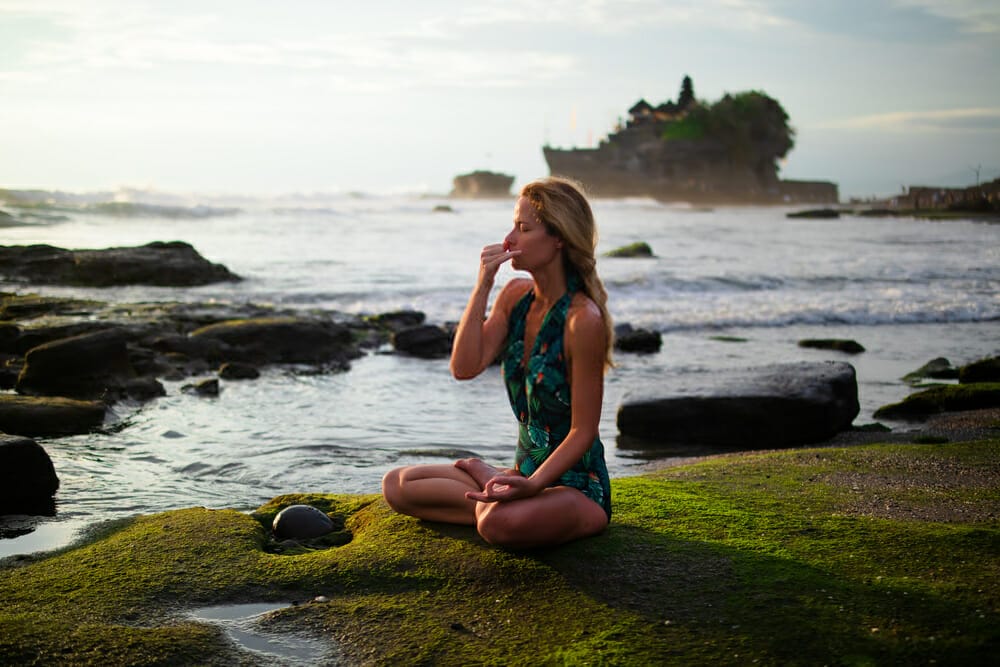
Dirga Pranayama (Three-Part Breath)
It is known as three breath cycles, three-part breath, or three-part breathing. It is a Pranayama that is done on the floor rather than in a seated position. To begin, take a deep breath and fill your tummy to the point where it rises.
You hold this position for a few seconds before exhaling and bringing your belly button inwards until you've entirely exhaled.
You inhale even deeper in the second part of the Pranayama, filling your rib cage with air as well. Exhale.
You must breathe much deeper the third time you inhale. Imagine your gut, rib cage, and heart centre being filled. Slowly exhale.
Do this 5-6 times.
Bhastrika Pranayama (Bellows Breath)
It is known as bellows breath or forced or artificial breathing. It is beneficial during the winter months when you need to keep your body warm.
Start in a seated, cross-legged position and inhale and exhale rapidly and continuously. It may be challenging to maintain a constant breathing rate, but do your best to do so.
After a few rounds, hold your breath and slowly exhale to complete the exercise.
Kapalabhati Pranayama (Skull Shining Breath)
It is known as skull shining breath. It is a type of Pranayama where quick and shallow breaths are taken through the nostrils by forcefully contracting and relaxing the abdominal muscle. This breath has been used for centuries to increase the body’s removal of carbon dioxide.
This Pranayama begins with you sitting in a comfortable position and breathing normally 2-3 times.
After that, take a big breath in and forcefully exhale, sucking your tummy in as you expel all the air. When you exhale, your stomach should return to its original position.
You should do this at least 20-30 times.
Ujjayi Pranayama (Victorious Breath)
It is a type of Pranayama, a yogic breathing technique known as victorious breath or ocean sound. Start breathing through your lips in a seated, cross-legged stance.
Try to restrict your throat while inhaling and exhaling to make it feel like someone is strangling you. The end effect will be a sound close to that of ocean waves.
You seal your mouth and breathe through your nose in the second phase of Pranayama. You must, however, continue to utilize the same throat constriction. You can do it a total of 10-15 times.
Anulom Vilom Pranayama/Nadi shodhana (Alternate Nostril Breathing)
Anulom Vilom is a Yogic breathing technique that balances your hemispheres of the brain and calms you down. It is one of the most basic pranayama techniques and balanced for all doshas and persons.
This exercise is also called anuloma viloma because viloma refers to doing things backwards. The name originates because the nostril utilized for intake and exhalation is reversed with each breath.
Start in a cross-legged seated position with your spine stretched and your back straight. Breathe deeply through your left nostril while pressing your thumb on your right nose.
Hold your breath for a beat before switching your thumb to press down on your left nostril and exhaling through your right nostril.
Repeat this technique, inhaling in through one nostril and expelling through the other. Do it a total of 10-15 times.
Sheetali Pranayama (the cooling breath)
As its name suggests, Sheetali Pranayama helps in cooling the body down. This Pranayama is suitable for individuals with low body temperature.
Starting in a seated position, take five to six deep breaths to prepare your body for the Pranayama.
Then, with your lips in an ‘o’ form, start inhaling deeply. Exhale through your nose at all times. It can be done 5-10 times more.
Brahamari Pranayama (Humming Bee Breath)
This Pranayama is also advantageous if you have a cold. It helps bring down your temperature and massages the thyroid gland and tonsils, thereby helping to clear congestion.
Your eyes and ears will be closed during this Pranayama. You use your thumb to close your ears and your fingers to close your eyes. Take a deep breath and chant OM as you exhale. Rep 10–15 times more.
Sheetkari Pranayama (Saliva Breath)
It is a Pranayama that is used for curing nasal congestion. To begin, take a deep breath through your mouth.
You must, however, keep your tongue rolled. Next, hold your breath while tilting your chin forward.
Then, via your nostrils, exhale. It is an excellent Pranayama to practice throughout the summer months since it keeps your body cool.
Moorchha Pranayama
Morcha Pranayama is a type of Pranayama that increases blood flow to the head and does not affect the heart. This Pranayama is best for individuals with a very stressful lifestyle.
It is a tough Pranayama in which you exhale continuously without inhaling. It raises the carbon dioxide level in your body, rendering you unconscious after a while.
When your body starts inhaling as you sleep, you progressively recover consciousness.
Palawan Pranayama
It is done in the water and is only recommended for advanced yogis. It entails manipulating your breath in such a way that you can stay afloat in the water.
Benefits of pranayama
Let us look at the physical and spiritual benefits of doing Pranayama.
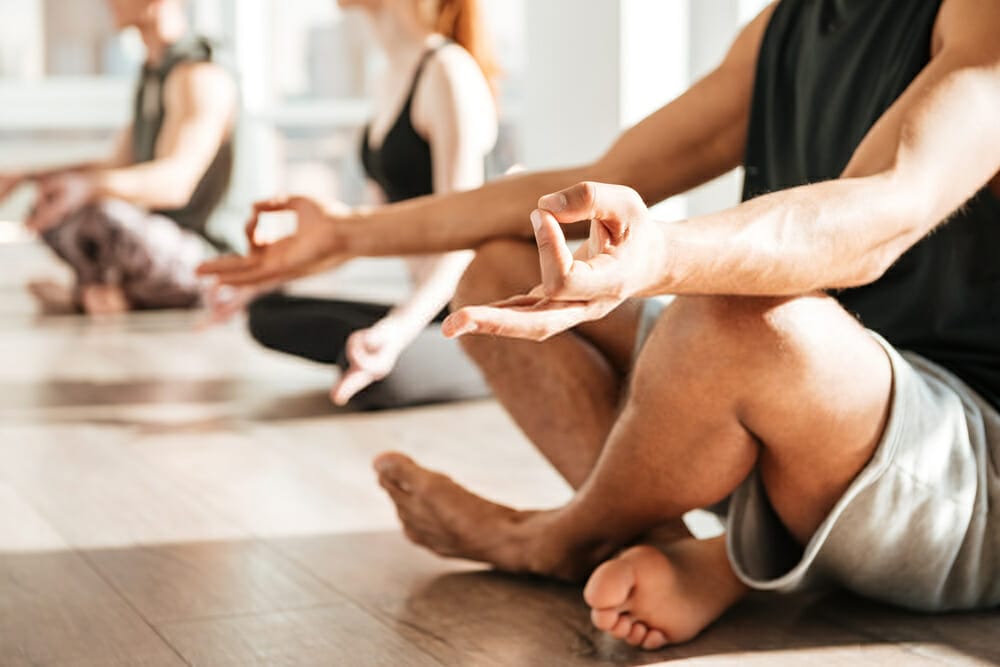
Health benefits
- Pranayama strengthens your lungs: Pranayama teaches you how to boost your expiratory power to increase airflow by decreasing lung resistance. Simply said, Pranayama is the best kind of exercise for the human respiratory system.
It teaches you to intentionally hold your breath, which maintains the isometric contraction of your respiratory muscles.
Pranayama, such as Ujjayi breathing, which demands intense breathing, improves respiratory endurance by working on the respiratory muscles.
With consistent Pranayama practice, the lungs’ expansion and deflation attain their full potential and begin operating to the greatest extent feasible. Pranayama also has a good effect on respiratory pressure and cycle.
- Helps In Detoxification: Yogic movements and Pranayama purify both the body and the mind.
For example, exhalation is a process that involves breathing out air and waste from the body. It is the body's natural reaction to flush out toxins and allow the body to function efficiently and optimally.
Prana, or breath, may only flow if there is no or very little undesirable material in the system. Toxins in the body are thus removed by the persistent and guided practice of breathing adjustment.
Pranayama helps to achieve a pure, pleasant, and serene state of mind and body through detoxifying.
- Boosts Immunity: Stress harms the body’s immune system. Pranayama has been found to improve immune system function by reducing the stress response.
Deep breathing techniques, such as kumbhaka (breath retention), focus on the abdomen, increase the body's defence mechanism and boost immunity.
- Improves Cardiovascular Health: In humans, the cardiovascular system consists of the heart (which pumps blood) and a network of arteries, veins, and capillaries (blood carriers). The circulatory system is another name for this system.
Pranayama is a technique for slowing down the heart rate by stimulating the body's cells. It also boosts oxygen consumption.
Sukha Pranayama and Pranava Pranayama enhance heart circulation, lower heart rate, and lower blood pressure.
- Improves Digestion: Digestion occurs through the digestive system, consisting of the stomach, pancreas, and small and large intestines. This system is also called the alimentary canal.
Pranayama helps with digestion by enhancing its efficiency and functionality. Yoga techniques such as Ujjayi Pranayama stimulate the stomach muscles to relax. As a result, it reduces stomach spasms and improves digestion.
- Helps in weight loss: Energy is released along with more sweating when you change your breathing method and focus on specific portions of your body. This procedure burns both calories and fat.
Pranayama is a breathing technique that tries to regulate the breathing process. As a result, abdominal muscles stimulates due to breathing. Pranayama is a set of unique breathing methods that can help you lose weight quickly.
Individual pranayamas, such as Kapalbhati Pranayama, concentrate on the abdomen region. It tones the abdominal muscles and helps to reduce belly fat.
- Effective For Brain Disorders: Pranayama aids in the discharge of toxins from the blood and improves the brain’s filtering capacity.
It improves the transport of nanoparticles to the brain across the Blood-Brain Barrier and filters out harmful toxic elements that you often inhale in a polluted environment. It also filters the poison that builds up as a result of smoking.
- It makes the skin glow!: Pranayama also includes the practice of holding one’s breath for a set amount of time (Kumbhaka). When we hold our breath inside the body, oxygen is delivered to the skin cells.
In particular, yogic breathing techniques such as Bhramari Pranayama and Bhastrika Pranayama have beneficial effects on the skin of the face.
For example, Bhramari pranayama with shanmukhi mudra and chin lock helps supply adequate oxygen to body cells, resulting in a healthy glow to the skin.
Spiritual benefits
Pranayama, whether it’s slow breathing or fast breathing, aids in your spiritual development. It relaxes your mind by blocking out the unwanted chatter in your head.
Because Pranayama heightens our olfactory senses, the aroma and smell of the environment become a calming aspect that aids in the rejuvenation of our mind and soul.
- Enhances Will Power: Practicing Pranayama requires willpower. You have to exert effort in controlling your breathing. Specifically, you have to control the inhalation process and the exhalation process. To be successful, you must be able to balance both.
Pranayama makes your mind strong since it is a form of meditation known as Tapasya in Hinduism.
- Helps In Refining The Mind: While Pranayama is good for the body, it is invaluable for the soul. Pranayama purifies the mind from its irrational thoughts and emotions. It helps in clearing those obstacles that hinder us from reaching our full potential.
You can quiet your mental clutter by focusing on a particular mantra or a breathing mantra that you choose daily.
- Improves concentration: Pranayama is the foundation for various deep meditation techniques. The practise of Pranayama can ground you in the present moment and improve your concentration levels.
- Keeps You Calm And Stress-Free: You can calm down your mind after a stressful day by practising Pranayama. Even a few minutes of breathing exercises will help to reduce your stress level and bring peace to your life.
What is the correct sequence to do Pranayama?
Before we get into the proper order for Pranayama, there’s the matter of whether you should do it before or after yoga poses.
Pranayamas are gentle breathing exercises. So, you should practice it after your yoga positions to get the most out of them.
If you don’t do your Pranayama correctly, you may lose the advantages and perhaps experience side effects.
Consider the following scenario:
If you begin your session with Nadi Shodhana, you will disrupt the subtle state you get by following it with Bhastrika or Kapalbhati. As a result, you can find yourself in a tumultuous energy mood.
You may have nervous energy if you do many rounds of Bhastrika and Kapalbhati without harmonizing Pranayama afterwards.
So, let’s look at the proper sequences of Pranayama:
Beginner Pranayama Sequences: It takes around 20 minutes to do these sequences
- Wave breath
- Ujjayi pranayama
- Meditation 5 minutes
- Spontaneous breath (lying down)
- Wave breath (lying down)
- Alternate breath
- Meditation 5 minutes
- Complete breath (lying down)
- Bhramari
- The alternate breath
- Meditation 5 minutes
- Spontaneous breath (lying down)
- Bhastrika pranayama
- Nadi Shodhana
- Meditation 5 minutes
Intermediate Pranayama Sequences: Takes 30 minutes
- Unilateral Bhastrika
- Bhramari
- Nadi Shodana pranayama
- Meditation 5 minutes
- Bhastrika pranayama
- Surya Bheda pranayama
- Nadi Shodhana pranayama
- Meditation 5 minutes
- Bhramari
- Nadi Shodhana pranayama
- Ujjayi pranayama
- Meditation 5 minutes
Advanced pranayama sequences: Takes 1 hour.
- Kapalbhati pranayama
- Murcha pranayama
- Sheetali pranayama
- Nadi Shodhana pranayama
- Ujjayi pranayama 20 minutes
- Meditation 5 minutes
- Spontaneous breath 5 minutes
- Bhastrika pranayama
- Surya Bheda pranayama
- Bhramari
- Nadi Shodhana pranayama
- Ujjayi 20 minutes
- Meditation 5 minutes
Follow these sequences daily, and you will start to see results within a short time. Do Pranayama for 15 minutes a day, and you will see the benefits gradually improve.
Conclusion
In conclusion, Pranayama is best done before yoga asana because it helps you understand the subtle aspects of yoga.
Then, do as many rounds as you need before the asanas because you want to have a solid foundation to practice asanas.
If you have been doing yoga for a while, you can integrate Pranayama further into your practice. However, before you do so, try to observe the subtle changes in your practice.
As a conclusion to this article, it is essential to understand the benefits of Pranayama and how it relates to our health and well-being.
When we have a solid understanding of Pranayama’s benefits, we won’t be as confused as those who know about its power.
So give Pranayama a try! You will start to see results within a short time. And with time, you'll know which sequence works best for you. Feel free to comment below if there's anything our readers should know!

